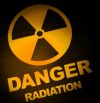Introduction to Ionizing Radiation Course Description
Atoms are the basic building blocks of all matter, and atoms of different elements occur naturally on the earth. Atoms consist of a nucleus containing protons and neutrons surrounded by electrons in orbitals around the nucleus. The number of protons determines the element (oxygen, hydrogen, etc.), and the number of neutrons determines the isotope (hydrogen-1, hydrogen-2, etc.). Some isotopes are unstable and give off energy (i.e., decay) to become more stable. In this context, an unstable atom is said to be “radioactive,” and the energy it releases is referred to as “radiation.” When the radiation has enough energy to ionize other atoms (i.e., remove negatively-charged particles called “electrons”) in its path, it is referred to as “ionizing radiation.” Types of ionizing radiation include alpha, beta, and neutron particles; gamma rays; and X-rays. In contrast, non-ionizing radiation has a lower energy that is not capable of ionizing other atoms. Examples include radio waves, microwaves, and visible light.
Open and Print First – Syllabus and Performance Eval – Introduction to Ionizing Radiation
Required Materials
Introduction to Ionizing Radiation Presentation
OSHA Introduction to Ionizing Radiation Text
EPA Ionizing Radiation Fact Book
Health Effects of Ionizing Radiation OSHA
Hyperlinks for Course – Radiation
Supplemental Materials
Advanced Ionizing Radiation Presentation
Background on Ionizing Radiation OSHA


